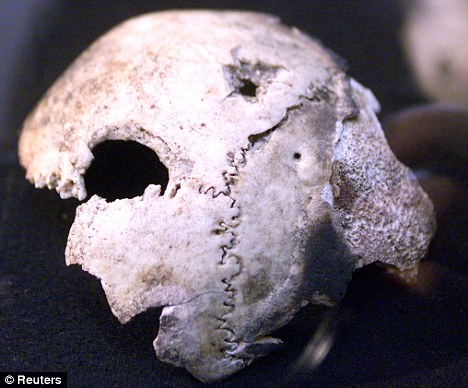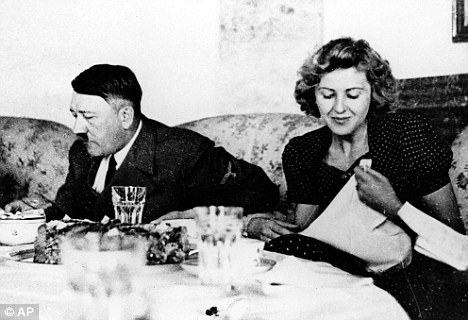
Fresh doubts over Hitler's death after tests on bullet hole skull reveal it belonged to a woman. Adolf Hitler may not have shot himself dead and perhaps did not even die in his bunker, it emerged yesterday.
A skull fragment believed for decades to be the Nazi leader’s has turned out to be that of a woman under 40 after DNA analysis.
Scientists and historians had long thought it to be conclusive proof that Hitler shot himself in the head after taking a cyanide pill on 30 April 1945 rather than face the ignominy of capture. The piece of skull - complete with bullet hole - had been taken from outside the Fuhrer’s bunker by the Russian Army and preserved by Soviet intelligence.
Now the story of Hitler’s death will have to rewritten as a mystery - and conspiracy theorists are likely to latch on to the possibility that he may not have died in the bunker at all.
The traditional story is that Hitler committed suicide with Eva Braun as the Russians bombarded Berlin.
Although some historians doubted he shot himself and suggested it was Nazi propaganda to make him a hero, the hole in the skull fragment seemed to settle the argument when it was put on display in Moscow in 2000.
But DNA analysis has now been performed on the bone by American researchers.
 Is it hers? Eva Braun died aged 33 and the skull was from a woman under 40 | 'We know the skull corresponds to a woman between the ages of 20 and 40,' said University of Connecticut archeologist Nick Bellantoni. 'The bone seemed very thin; male bone tends to be more robust. And the sutures where the skull plates come together seemed to correspond to someone under 40.' Hitler was 56 in April 1945. Mr Bellantoni flew to Moscow to take DNA swabs at the State Archive and was also shown the bloodstained remains of the bunker sofa on which Hitler and Braun were believed to have killed themselves. |
Read more at http://theunexplainedmysteries.com/hitler-death.html
